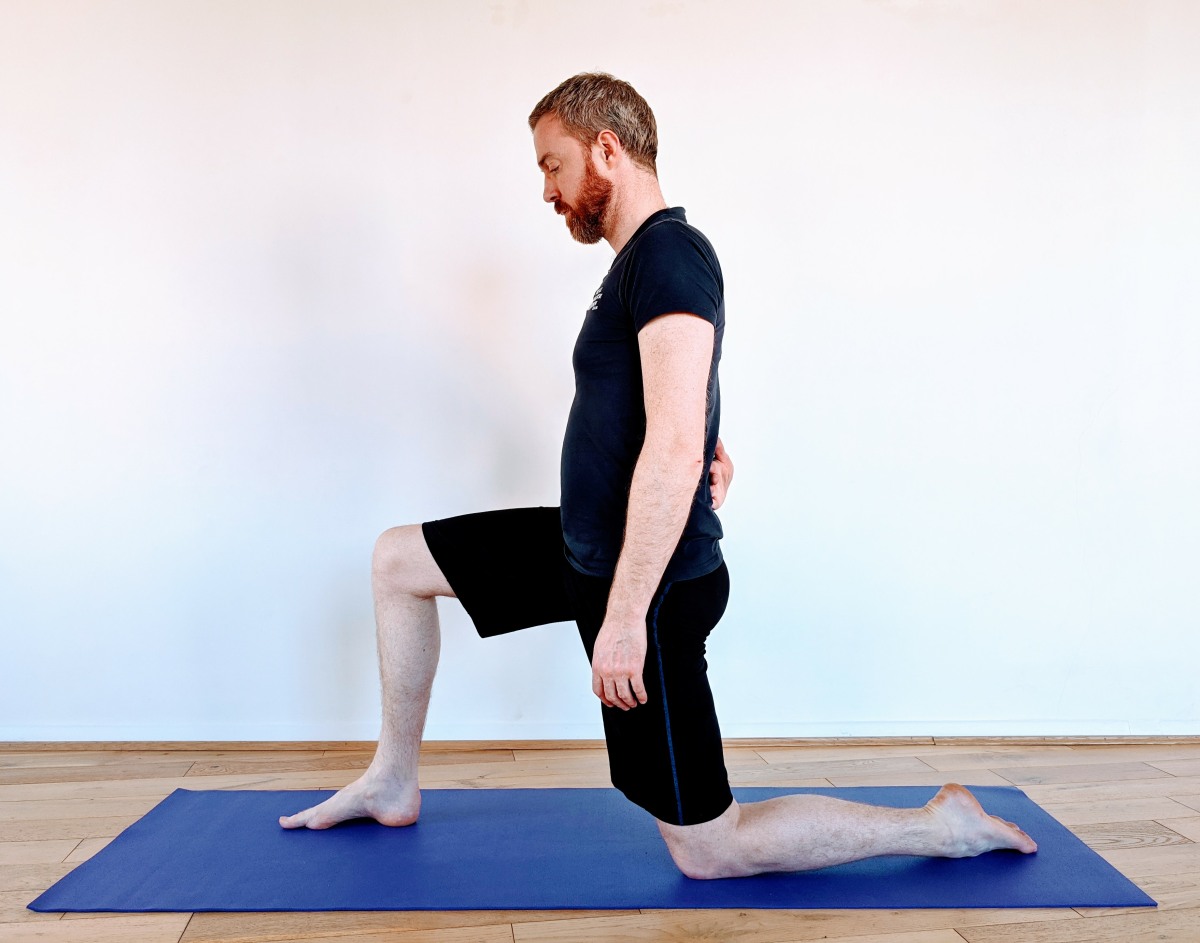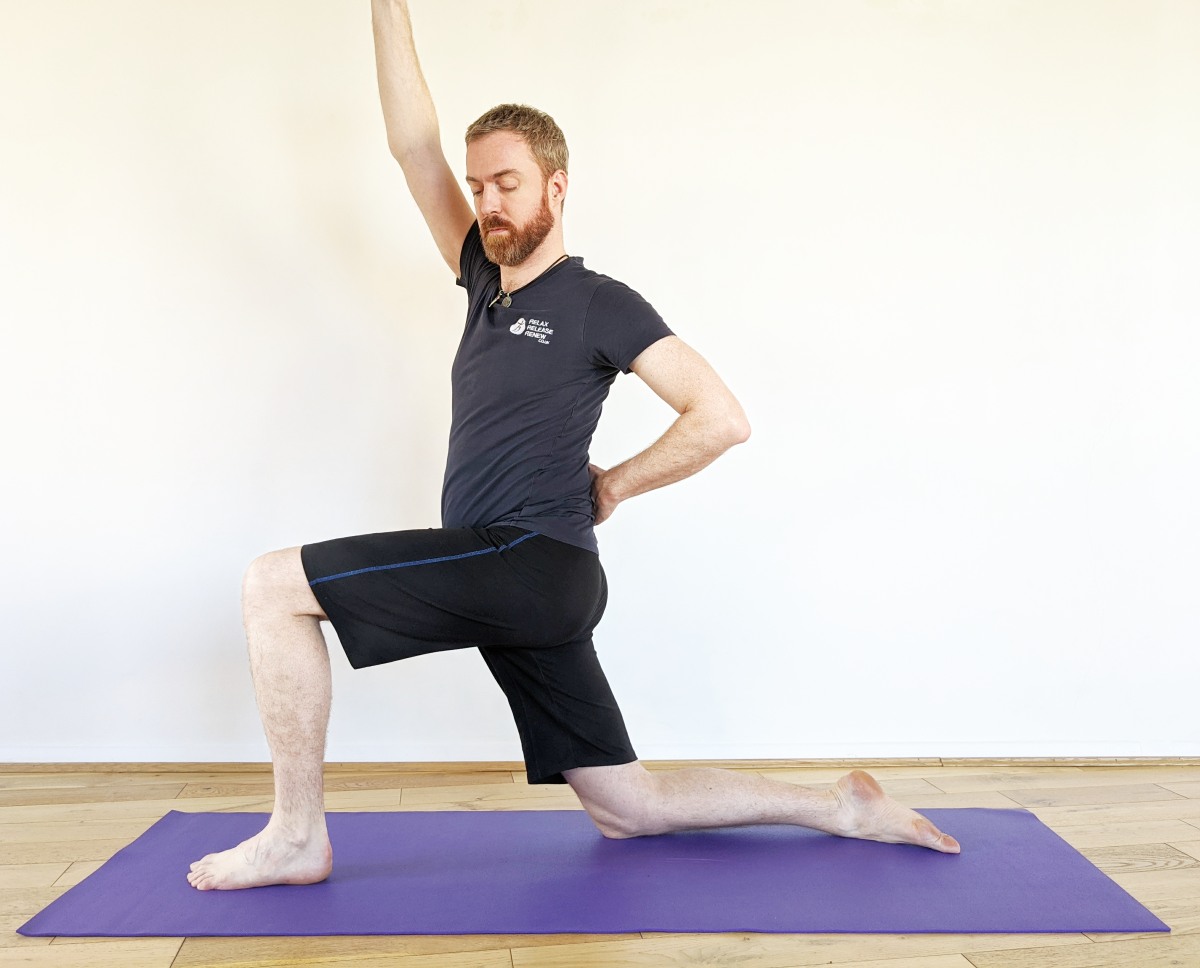The hip flexors are a group of muscles that bring the knee towards the chest. These are said to get shorter when sitting for any prolonged period. The three main muscles in this group are:
- Psoas. This is the one that many people have been told about. It connects the vertebrae of the low back (including the disks) to the thigh bone, passing over the front of the groin. The psoas and the diaphragm blend into each other on the low lumbar spine. The psoas is very close to the adrenal glands and some say they get the first hit of adrenalin when this is triggered, leading to an increase in tension. Becuase of this responsiveness to the fight/flight stress response the Psoas is sometimes referred to as the “Muscle of Emotion” or the “Muscle of the Soul”.
- Iliacus. This is the sibling of the Psoas, but lines the inside of the pelvic bowl, crossing over the front of the groin to meet up with the psoas as it attaches to the thigh bone. The psoas and the iliacus are often referred to as one muscle the “iliopsoas” but they start in different places. The iliacus is pelvis to thigh bone, the psoas is lumbar vertebra to thigh bone, which leads to a subtle different action.
- Rectus Femoris. This is considered a hip flexor, but is also one of the Quad muscles, and attaches the pelvis to the kneecap and lower leg. This muscle will be partly involved in this stretch, but the Quad stretch may be better at targetting this one.
Equipment
None
Steps
- You can do this either standing (which I call a mini lunge) or kneeling. The pictures are of me kneeling as that was clearer for the photographs.
- Take a step forward with one foot if standing, or swing one knee forwards.
- You want to flatten the low back (minimise the lumbar curve) before anything else. I do this by placing the back of the same hand as the front foot/knee on my low back and gently pushing into it.
- Gently bend the front knee to achieve the stretch. It is not a strong feeling stretch and to go deeper into it you will need to tilt the pelvis and create a low back curve.
- To add a further stretch, lift the same arm as the back leg above your head (lifting that side of the ribcage) and turn towards the front leg.
- Hold each part of the stretch for 30 seconds.
- Repeat on the other side.



Things to be aware of:
- The psoas attaches on the lumbar spine, and people often say that they can’t feel things unless they go into a really deep lunge. In this position the pelvis has tilted forwards as the thigh bone can’t go too far behind the pelvis due to the arrangement of ligaments and bone structure, so the low back is curving to achieve this position, which lets the psoas off the hook.
Why do I say to hold the static stretch for 30 seconds? I put it like this: the first 10 seconds it feels like the muscles are shocked into wondering what this position is. Then the next 10 seconds they start to relax into the position, and the final 10 seconds they might also be able to move a bit deeper into the movement, and accept that this is possible.
Video
Here’s a short video of me running through this exercise as shown above as well as at the end showing the standing variation.
Thanks for reading this my lovely Interonauts.
Tim


